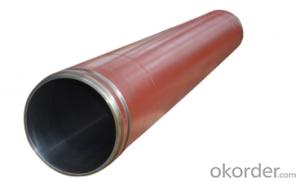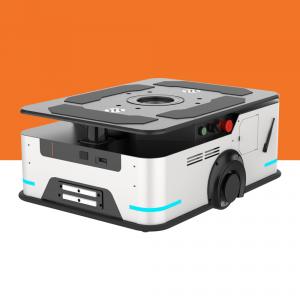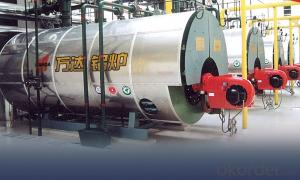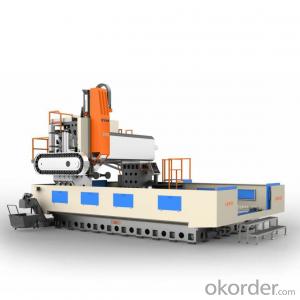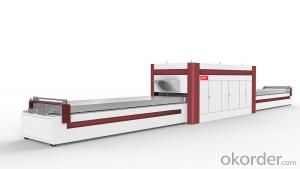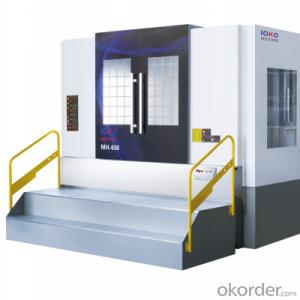DELIVERY CYLINDER(SCHWING ) I.D.:DN180 CR. THICKNESS :0.25MM-0.3MM LENGTH:1775MM
- Loading Port:
- Shanghai
- Payment Terms:
- TT OR LC
- Min Order Qty:
- 2 pc
- Supply Capability:
- 1000 pc/month
OKorder Service Pledge
Quality Product, Order Online Tracking, Timely Delivery
OKorder Financial Service
Credit Rating, Credit Services, Credit Purchasing
You Might Also Like
Packaging & Delivery
| Packaging Detail: | wooden case, seaworthy packing |
| Delivery Detail: | 15 days |
Specifications
Concrete Pump Delivery Cylinder DN230*2100
1. Capacity: 60,000~80,000cbm
2. Size: DN180, DN200, DN230..
4. Brand: PM, Sany,ZM
Concrete Pump Delivery Cylinder DN230*2100
1. Material: C45
2. quenching and tempering to improve the hardness to HB241-280
3. inner wall chrome thickness is 0.25-0.30mm, hardness HV820-900.
4. Brand: SCHWING, PM, SANY, KYOKUTO, CIFA
5. Capacity: 60,000~80,000cbm

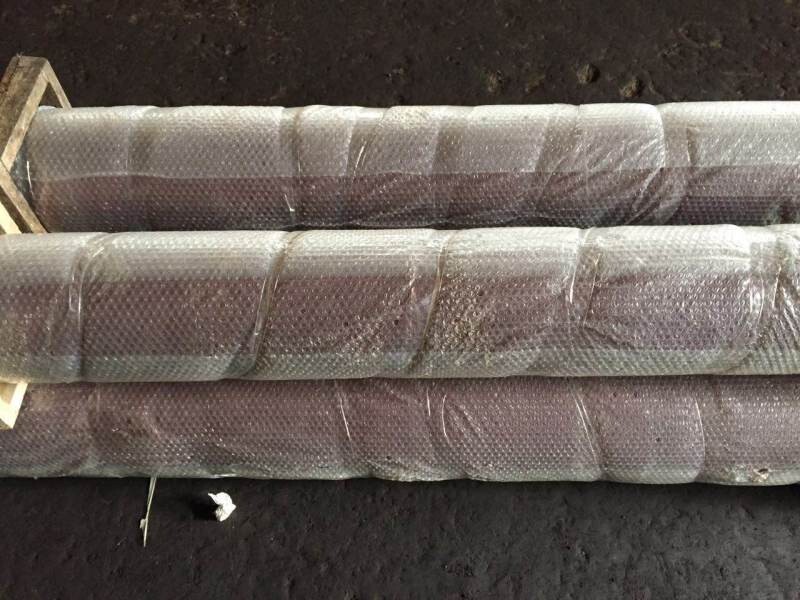

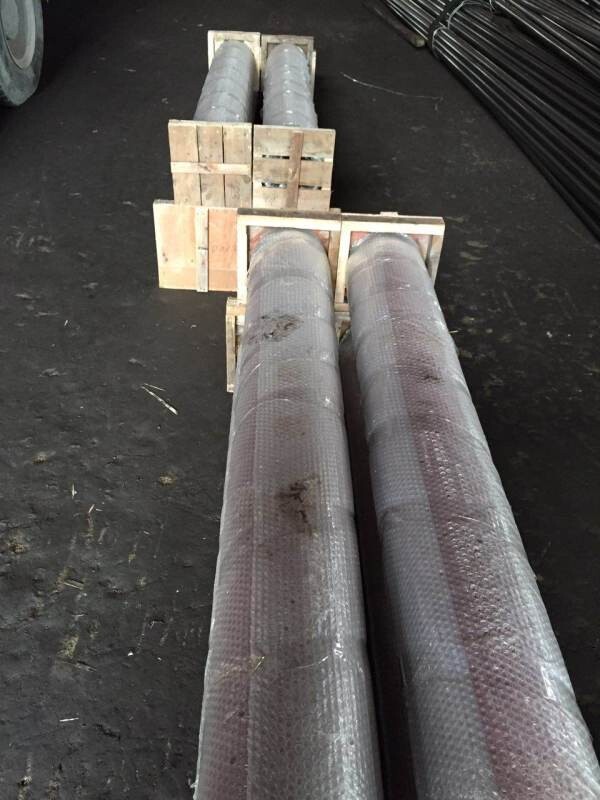
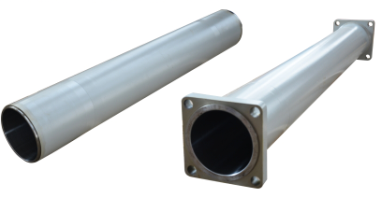
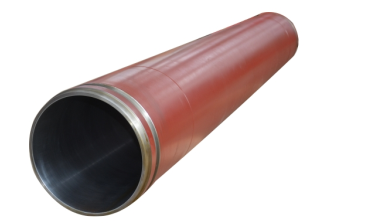
- Q:How often should concrete pump agitator motors be inspected and replaced?
- Concrete pump agitator motors should be inspected regularly to ensure they are functioning properly and to identify any potential issues before they become major problems. The frequency of inspections depends on various factors such as the workload and conditions in which the motor operates. However, a general guideline is to inspect the agitator motors at least once a year or after every 500 hours of operation, whichever comes first. In terms of replacement, it is essential to monitor the motor's performance closely. If there are any signs of motor failure, such as overheating, excessive noise, or decreased efficiency, it may be necessary to replace the motor sooner rather than later. Additionally, if the motor fails any inspections or tests, it should be replaced immediately to avoid any safety hazards or disruptions in the concrete pumping process. Ultimately, the key is to prioritize regular inspections and maintenance to extend the lifespan of the agitator motors and ensure they are operating at their optimal level. Following manufacturer guidelines, consulting with experts, and conducting routine checks will help determine the appropriate timing for inspections and replacements.
- Q:How can a faulty lubrication system affect the pump's performance?
- A faulty lubrication system can significantly affect the pump's performance in several ways. Firstly, a lubrication system is responsible for providing a thin film of lubricant between moving parts of the pump, reducing friction and wear. If the lubrication system is faulty or inadequate, it can result in increased friction between components, leading to excessive heat generation and accelerated wear and tear. This can ultimately reduce the efficiency and lifespan of the pump. Secondly, a faulty lubrication system can cause inadequate lubrication to critical components, such as bearings and seals. Insufficient lubrication can lead to increased friction, heat, and ultimately, premature failure of these components. This can result in increased downtime, costly repairs, and potential damage to other parts of the pump. Furthermore, a faulty lubrication system can also result in the contamination of the lubricant. Contaminants such as dirt, debris, or moisture can enter the system due to leaks or improper maintenance. These contaminants can cause abrasive damage to the pump's internal components, leading to reduced efficiency, increased wear, and potential failure. Lastly, a faulty lubrication system can also impact the pump's overall performance and energy consumption. Insufficient lubrication can increase the power requirements of the pump as it works harder to overcome friction and resistance. This can result in higher energy consumption and increased operating costs. In conclusion, a faulty lubrication system can severely impact the pump's performance by causing increased friction, accelerated wear and tear, premature failure of critical components, contamination of the lubricant, and increased energy consumption. Regular maintenance and proper lubrication are crucial to ensure the pump operates at its optimal level and to extend its lifespan.
- Q:Can a concrete pump wear plate be repaired or does it need to be replaced entirely?
- A concrete pump wear plate can be repaired in certain situations, but sometimes it may need to be replaced entirely. The decision whether to repair or replace the wear plate depends on the extent of the damage and the overall condition of the plate. Minor damages such as small cracks, dents, or worn out areas can often be repaired using suitable techniques. For example, if there are small cracks, they can be welded or filled with an appropriate epoxy or filler material. Similarly, if there are dents or worn out areas, they can be filled and smoothened to restore the plate's functionality. However, if the wear plate has suffered significant damage, such as extensive cracks, severe corrosion, or large holes, it may be better to replace the plate entirely. This is because repairing such extensive damage may compromise the structural integrity and effectiveness of the wear plate. In these cases, replacing the wear plate ensures the optimal performance and safety of the concrete pump. It is crucial to assess the condition of the wear plate carefully before deciding whether to repair or replace it. Consulting with experts or professionals familiar with concrete pump maintenance can provide valuable guidance in making the right decision. Furthermore, regular maintenance and inspection of the wear plate can help identify any potential issues early on, allowing for timely repairs or replacements to prevent further damage and ensure the efficient operation of the concrete pump.
- Q:How does the concrete pump work?
- When the pump is in place, support the leg and keep the body level and stable. When feeding with a distributor, the body shall not exceed 3 degrees of inclination
- Q:What are the advantages of using tungsten carbide components in concrete pump spare parts?
- There are several advantages of using tungsten carbide components in concrete pump spare parts. Firstly, tungsten carbide is an extremely hard and durable material, which ensures longer lifespan and increased wear resistance of the components. This means reduced maintenance and replacement costs in the long run. Additionally, tungsten carbide has excellent corrosion resistance, making it suitable for use in harsh and corrosive environments commonly found in concrete pumping applications. Furthermore, tungsten carbide components offer superior strength and toughness, enabling them to withstand high-pressure and heavy-duty operations without compromising performance. Overall, the use of tungsten carbide in concrete pump spare parts leads to improved efficiency, reliability, and cost-effectiveness in concrete pumping operations.
- Q:What are the advantages of using ceramic components in concrete pump spare parts?
- There are several advantages of using ceramic components in concrete pump spare parts. Firstly, ceramic materials are known for their exceptional durability and wear resistance. Concrete pumps operate under high pressure and require components that can withstand the intense forces and abrasion. Ceramic parts have superior hardness and strength, making them highly resistant to wear and extending the lifespan of the spare parts. Secondly, ceramic components have excellent corrosion resistance. Concrete contains various chemicals and substances that can be corrosive to metals. By using ceramic parts, the risk of corrosion is significantly reduced, ensuring the longevity and reliability of the concrete pump spare parts. Additionally, ceramic materials have low friction coefficients. This means that when ceramic components are used in concrete pumps, there is less friction between the moving parts, resulting in reduced energy consumption and increased efficiency. This can lead to cost savings and improved overall performance of the concrete pump. Furthermore, ceramic parts have a high thermal resistance. Concrete pumps generate heat during operation, and this can cause damage or deformation to certain components. However, ceramic materials can withstand high temperatures without losing their structural integrity, ensuring the reliability and safety of the concrete pump. Lastly, ceramic components have excellent dimensional stability. They are less prone to expansion or contraction due to temperature changes, ensuring that the spare parts maintain their shape and fit accurately within the concrete pump. This precision fitting helps to minimize leakage and maintain the efficiency of the pump. In summary, the advantages of using ceramic components in concrete pump spare parts include exceptional durability, corrosion resistance, low friction, high thermal resistance, and dimensional stability. These benefits contribute to increased lifespan, improved performance, reduced maintenance costs, and enhanced overall efficiency of the concrete pump.
- Q:Can I get spare parts for both concrete pumps with and without pressure washers?
- Yes, you can get spare parts for both concrete pumps with and without pressure washers. Many manufacturers and suppliers offer a wide range of spare parts for concrete pumps, including those with pressure washers attached. These spare parts can include components such as hoses, nozzles, valves, cylinders, seals, filters, and other accessories needed for the proper functioning of the concrete pump. Whether you have a concrete pump with or without a pressure washer, it is important to ensure regular maintenance and timely replacement of worn-out or damaged parts to ensure optimal performance and longevity of the equipment.
- Q:How can one source reliable suppliers for concrete pump spare parts?
- One can source reliable suppliers for concrete pump spare parts by following a few steps. Firstly, it is important to conduct thorough research on potential suppliers. This can be done by searching online directories, industry forums, and marketplaces dedicated to construction equipment and spare parts. Reading customer reviews and ratings can provide valuable insights into the reliability and quality of the suppliers. Secondly, it is advisable to reach out to industry professionals and experts who have experience in the concrete pump industry. They can provide recommendations and references for reliable suppliers they have worked with in the past. Additionally, attending trade shows and exhibitions related to the construction industry can be a great way to connect with suppliers and evaluate their product offerings in person. This allows for direct communication and the opportunity to assess the reliability and quality of their spare parts. Moreover, it is essential to request samples or product catalogs from potential suppliers to ensure that the spare parts meet the required specifications and quality standards. This can help in assessing the reliability of the suppliers and the compatibility of their products with the concrete pump. Furthermore, conducting background checks on the suppliers is crucial. Verifying their credentials, certifications, and licenses can provide assurance of their reliability and professionalism. It is also beneficial to inquire about their manufacturing processes and quality control measures to ensure the consistency and durability of the spare parts. Lastly, comparing prices, warranties, and after-sales services offered by different suppliers can help in making an informed decision. It is important to strike a balance between the cost and the reliability of the suppliers to ensure a long-term and fruitful partnership. By following these steps and taking the time to thoroughly evaluate and research potential suppliers, one can source reliable suppliers for concrete pump spare parts and ensure the smooth operation and maintenance of their equipment.
- Q:How long does it take to receive concrete pump spare parts after placing an order?
- The time it takes to receive concrete pump spare parts after placing an order can vary depending on several factors. Firstly, it depends on the availability of the specific spare parts you have ordered. If the parts are readily available in stock, the delivery time can be relatively quick. However, if the parts are not in stock and need to be manufactured or sourced, it may take longer to receive them. Secondly, the location and distance between the supplier and your location also play a role in the delivery time. If the supplier is in close proximity, the parts can be delivered within a few days. However, if the supplier is located far away or in a different country, it may take longer due to shipping and customs processes. Furthermore, the shipping method you choose can also impact the delivery time. Expedited shipping options can ensure quicker delivery, but at an additional cost. Standard shipping methods may take longer but are usually more cost-effective. Lastly, the efficiency and responsiveness of the supplier also come into play. A reliable supplier with a streamlined ordering and shipping process will likely be able to deliver the spare parts in a shorter time frame. In conclusion, the time it takes to receive concrete pump spare parts after placing an order can vary based on factors such as availability, location, shipping method, and supplier efficiency. It is advisable to inquire about estimated delivery times when placing the order to have a better understanding of when the parts will be delivered.
- Q:Are there any safety considerations when using concrete pump spare parts?
- Yes, there are several safety considerations when using concrete pump spare parts. Firstly, it is important to ensure that the spare parts are of high quality and meet the necessary safety standards. Using substandard or faulty spare parts can increase the risk of accidents and malfunctions. Additionally, proper training and knowledge of the equipment and spare parts are crucial to ensure safe operation. Regular inspection and maintenance of the spare parts are also essential to prevent any potential hazards. Lastly, following all safety guidelines and protocols provided by the manufacturer is necessary to minimize the risk of injuries or accidents while using concrete pump spare parts.
1. Manufacturer Overview |
|
|---|---|
| Location | |
| Year Established | |
| Annual Output Value | |
| Main Markets | |
| Company Certifications | |
2. Manufacturer Certificates |
|
|---|---|
| a) Certification Name | |
| Range | |
| Reference | |
| Validity Period | |
3. Manufacturer Capability |
|
|---|---|
| a)Trade Capacity | |
| Nearest Port | |
| Export Percentage | |
| No.of Employees in Trade Department | |
| Language Spoken: | |
| b)Factory Information | |
| Factory Size: | |
| No. of Production Lines | |
| Contract Manufacturing | |
| Product Price Range | |
Send your message to us
DELIVERY CYLINDER(SCHWING ) I.D.:DN180 CR. THICKNESS :0.25MM-0.3MM LENGTH:1775MM
- Loading Port:
- Shanghai
- Payment Terms:
- TT OR LC
- Min Order Qty:
- 2 pc
- Supply Capability:
- 1000 pc/month
OKorder Service Pledge
Quality Product, Order Online Tracking, Timely Delivery
OKorder Financial Service
Credit Rating, Credit Services, Credit Purchasing
Similar products
New products
Hot products
Related keywords
